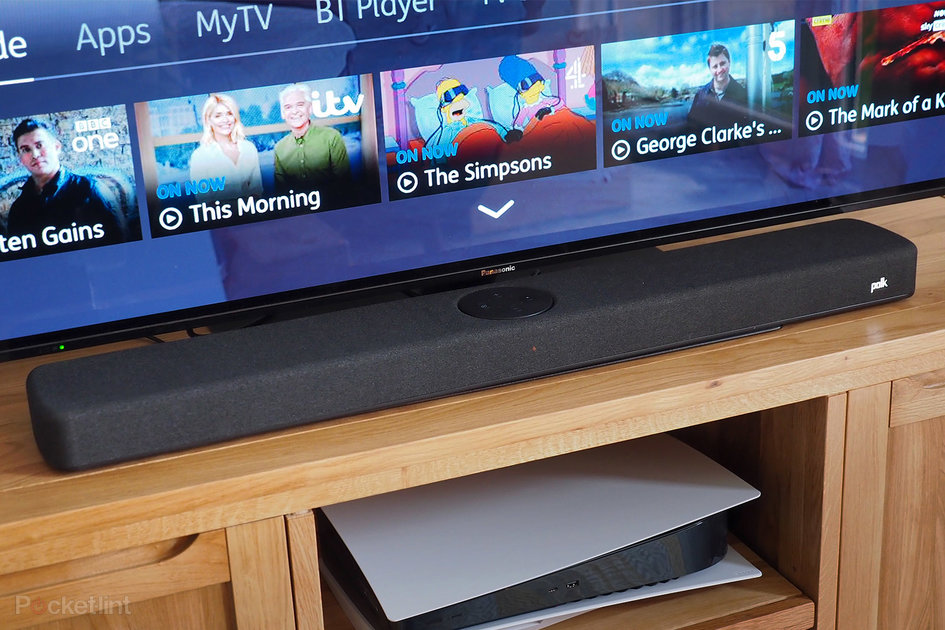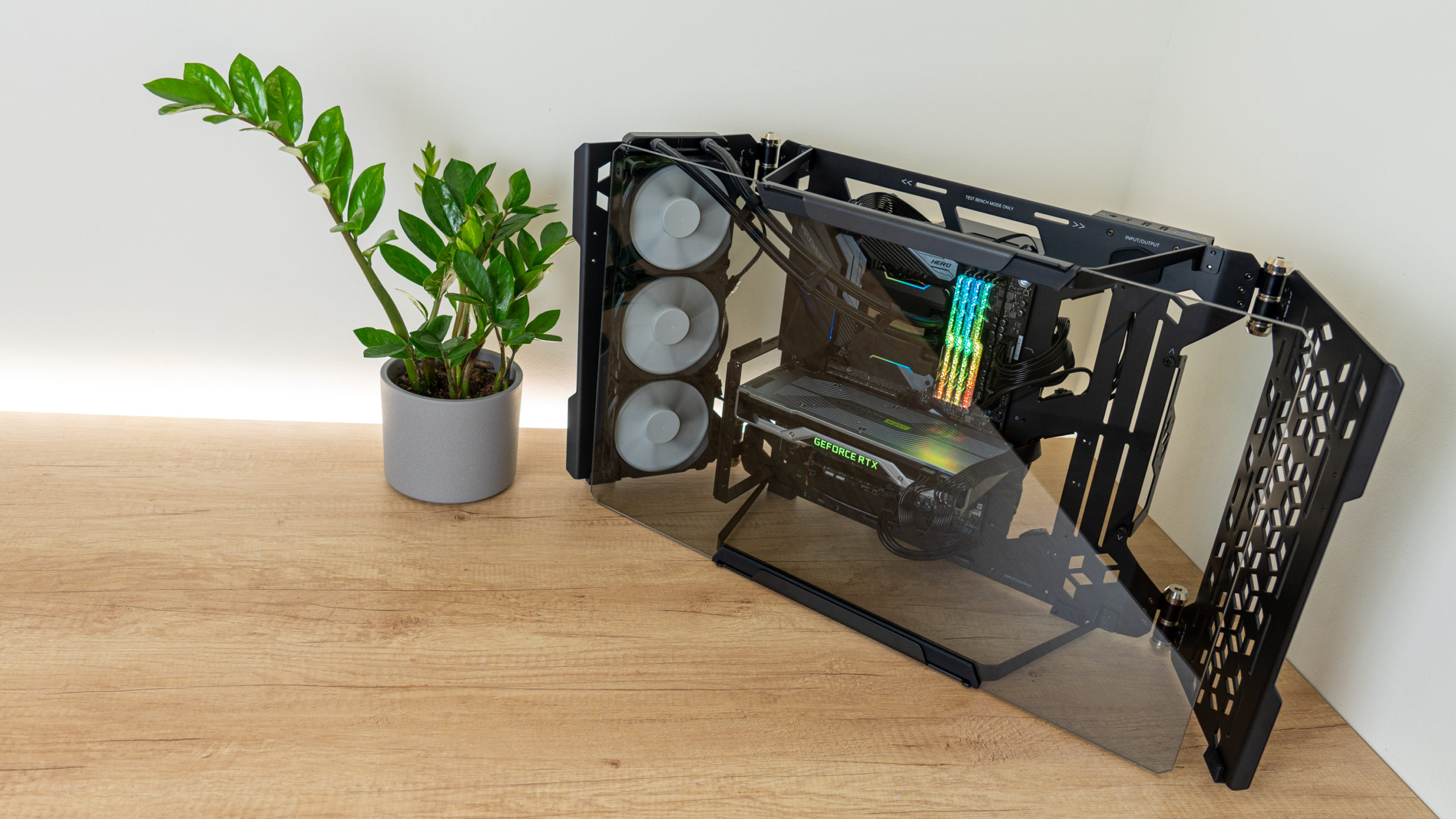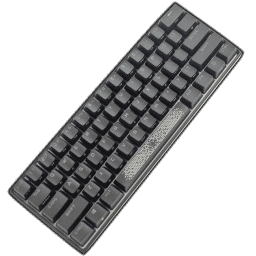(Pocket-lint) – If your TV audio isn’t up to snuff then there are a bevy of options on the market to help step things up a notch. Among these is Polk Audio’s React soundbar, which is available for less cash than many a rival.
But just because you’re paying less doesn’t mean you’ll get less in terms of raw sound capability. Especially if, as we have for this review, you opt for the bundled React soundbar and React Sub package.
That said, the Polk React doesn’t offer any fancy object-based sound decoding, it doesn’t even play pretend – as there’s no Dolby Atmos surround output here from the bar itself – instead sticking to Dolby Digital and DTS surround formats.
You can later invest in Polk’s RS2 surround speakers, which are simply paired at the touch of a button, to create a fully fledged 5.1 system (if you have the Sub) in smaller steps rather than forking our a massive chunk of change up front. That, we think, is a big part of this soundbar’s wider appeal.
Design & Setup
- Ports: 1x HDMI (ARC) output; 1x optical input
- Controls: Included remote / four-button top-of-‘bar panel
- Connectivity: Wi-Fi, Bluetooth, Alexa voice control integrated
- Dimensions (soundbar): 56mm (H) x 864mm (W) x 121mm (D)
- Dimensions (sub): 348mm (H) x 218mm (W) x 419mm (D); 7.5kg
Having recently reviewed the JBL Bar 5.0 MultiBeam – which is an all-in-one box solution that can’t ever be connected to separates – it was interesting to dig into the Polk React for its points of difference. The Polk is a longer soundbar – at 864mm it’s 160mm longer by comparison – so even sat against a 55-inch telly, as pictured, it’s fairly good at covering the majority of the screen width, which is handy for a wide soundscape to help match the action on screen.
The Polk is simpler than the JBL in terms of core specification, though, as there’s no HDMI input, just the one HDMI input – the latter of which is ARC (audio return channel) capable. For us this meant a slight rejig of our TV’s four HDMI ports, as we couldn’t passthrough using the soundbar itself, ensuring the HDMI ARC cable provided was running from TV to React ‘bar.
Thing is, our ARC port is one of the two 4K resolution capable HDMI ports on the TV (every maker does this at present), so our BT TV box for telly had to be relegated to HDMI 4 (running Full HD maximum – which, in fairness, is how majority content from there is streamed) to save HDMI 1 for our PlayStation 5 (our source of Blu-ray and 4K streaming apps such as Netflix). ARC does its job though: once the TV is switched on the audio handshakes between device and soundbar.
Well, it didn’t at very first. For a brief period of time we were in a no man’s land of having both TV audio and soundbar audio outputting simultaneously. That’s because the setup is, to our mind, a little finicky. The soundbar needed an update out of the box, that much it told us (by voice alert), but having advised us to install the Polk Connect app – which we did on our Google Android phone – it then didn’t like it, forcing a handover to Amazon Alexa instead. But the Alexa app initially failed to get things talking successfully.
Success did come after a few attempts, after which there’s been no issues, but it very much points to this Polk’s intentions: it’s an Alexa voice control soundbar through and through. There’s even an Alexa button pride of place on the included remote control. There’s not even a proper off button – as your main TV remote will take over for that duty anyway – and there’s always a glowing light of some colour to the front of the ‘bar, which we think is a design downside when watching movies in darkened rooms.
Oh, and Alexa shouts crazily loud for some reason too – almost to the point of distorting – and there’s no simple way that we can find to turn this down, which is irksome.
The included remote isn’t the prettiest, but it’s well appointed, able to switch between TV and Bluetooth audio sources. There are adjustments for bass up/down on the left, volume up/down in the middle, voice up/down on the right, four quick-select movie presets below this, and surround sound volume/balance adjustment to the bottom of the controller.
That surround sound adjustment won’t do anything unless you’ve bought into the Polk’s expandable options though. As the React soundbar itself is a straight forward left, centre, right speaker arrangement. But if you buy the RS2 surround speakers – not on test here – then you can easily sync them at the touch of a button on the back of the soundbar and boost things to a 5-channel system.
Go with the subwoofer – paired in the same way, using the same button to quickly sync without extra wires – and that brings 5.1 channel potential into your living room. The sub is pretty beefy in terms of scale – and deeper than it is either wide or tall – but the addition of true bass at the lower end of the spectrum is transformative to the sound profile. We think it’s an essential addition to make the React ‘bar deliver its potential.
Best speakers for PC gamers 2021: All the sound and RGB lighting you could ever need
By Adrian Willings
·
Sound Quality
- Soundbar: 2x 96x69mm mid-range drivers; 2x 25mm tweeters; 2x passive radiators
- Adjustment: Bass +/-, Voice +/-, Volume +/-, Surround balance & volume
- Mode presets: Movie, Music, Sport, Night
- Sub: 1x 7-inch woofer
Which brings us to the whole reason to buy a soundbar: to enhance audio quality, notching up TV audio to new heights. And the Polk React does a generally decent job, although given its positioning to the base of a screen (inevitable, of course) and lack of object-based sound control it lacks any distinct verticality – so on larger screens voice parts might not give the impression they’re coming from the person speaking with the greatest of precision.
Otherwise there’s a lot of tweaking that can be done with ease, so it’s great to have all that control directly to hand. The presets are particularly useful, selecting Movie to enhance that extra bass – there’s always a good down-pitched “wommm” in an action flick – or Night to quieten such frequencies and allow your family/neighbours/whoever to get some shut-eye when you’re having a late night session.
The independent controls for bass and voice are handy too, the latter really adjusting the mid-to-high-end of the frequency range to give more curvature to vocal output. So if you’re finding the bass balance is a bit too high, then this can help voices to cut through the mix with greater clarity. We like that it’s a simple system, too, not over-complex in how many ways it can all be adjusted.
However, bass-wise we’ve heard soundbars with chunkier capability. Which is why, once paired with the React Sub, you’ll really hear and feel the difference. With the React subwoofer linked up the sound has a much more rooted appeal, delivered with gusto. It’s got great musicality too, to the point we’ve ceased using our Marshall standalone speaker in the living room and instead just tuck into the Polk React and Sub on Music mode for the best possible listen.
Through the Alexa app it’s simple enough to get the soundbar to register as part of your home network. With Google Home open it’s easily identified (although not directly controllable here, as Alexa rules the way), so Spotify plays nice – and you can ask Alexa by voice to load your favourites.
We suspect that adding a pair of RS2 speakers would add to the expanse of the overall sound as, like we said up top, the Polk React doesn’t support object-based audio, so you’re not going to get any Dolby Atmos pseudo height and all-around sense from this soundbar. But, really, given how such systems can sometimes fly off the handle in weird (and not always wonderful) ways, we think Polk delivers here exactly what people will want – enhanced sound on a smaller budget.
That will raise the question, however, as to whether you want something smaller and more technologically complete, such as the JBL Bar 5 MultiBeam that we mentioned at the beginning of this review. It can’t match the smacking bass of the subwoofer by any means, but if you don’t have the space then it might be a better fit to your needs – and the Atmos found there is impressive given the right source material.
Verdict
While the Polk React doesn’t have object-based sound decoding bells and whistles – that’s to say there’s no vertical channels for pseudo surround – as a standalone large ‘bar with decent output and control, for a very fair price, it’s got a lot going for it. Especially if you’re keen on Alexa integration for voice control.
But things really step up a notch when you add a React Sub as part of the package. That’s when the sound becomes extra full, deep and rich – to the point that it’s taken preference as our living room music speaker when the telly is out of use. Now if that’s not high praise, then what is? Keep your expectations in check in terms of technological prowess and Polk delivers strong at this end of the market.
Also consider
JBL Bar 5.0 MultiBeam
squirrel_widget_4229578
It’s a different prospect, as it’s a single box solution – so you’ll never be able to add extras or a sub – but that might better suit your space restrictions. However, it permits passthrough (thanks to HDMI in and out ports with eARC) and offers Dolby Atmos decoding, which with the right source delivers a more complete sound. That said, the Polk’s React Sub, if you want to fork out the extra cash, takes impactful sound to the next step where the JBL simply cannot reach.
- Read our review
Yamaha SR-C20A
squirrel_widget_4026933
Looking for something smaller? If what you need is a bit of everything from your soundbar – ignoring that, at this price point, you can’t expect surround sound – you can’t go far wrong with this little Yamaha. It’s a one-box solution (so, like the JBL above, there there’s no subwoofer here) and can turn its hand to pretty much anything, without ever making itself the centre of attention. A different prospect, but a nice neat little package.
- Read our review
Writing by Mike Lowe. Editing by Adrian Willings.












